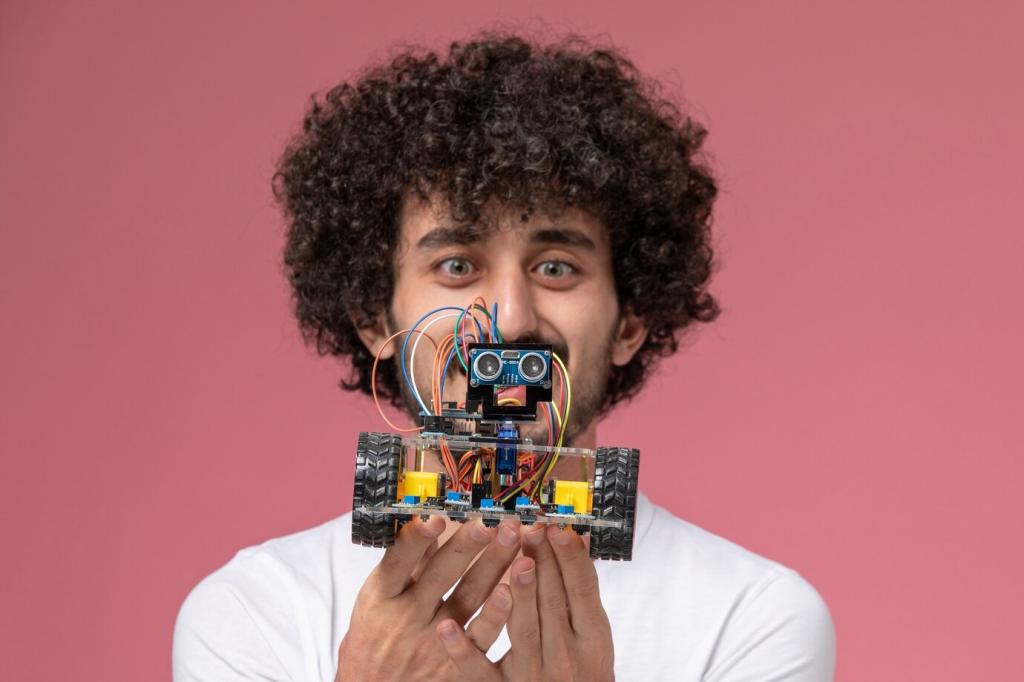How Artificial Intelligence Works: A Simple Explanation
Chosen theme: How Artificial Intelligence Works: A Simple Explanation. Welcome! We will demystify AI with clear analogies, small stories, and friendly guidance so you can understand, question, and confidently use intelligent tools in daily life.

From Data to Decisions: The Everyday Journey of AI
Data: Examples, Not Magic
AI learns from examples the way a chef learns from recipes and tasting. Photos, texts, and numbers become lessons. Share a daily moment where your apps improved after seeing your preferences.
Patterns: The Heart of Learning
Patterns are relationships found in data, like recognizing a friend’s voice in a noisy room. My grandma once said, “It’s like remembering how the bus fills at 5 PM.” She was right.
Decisions: Predictions, Not Certainties
AI outputs an informed guess based on patterns it has learned, not absolute truth. It estimates what is likely. Ask your questions below and tell us where AI guessed right or wrong for you.

Practice Makes Patterns
During training, the model tries to predict an answer, compares it to the correct one, and adjusts. This loop is repeated many times until errors shrink. Notice any app that improved over time?

The Role of Labels
Labels are answers provided by people or trusted processes, like “cat” or “spam.” They guide the model during training. Consider contributing to open datasets if you care about better, fairer results.

Why Models Need Validation
Validation checks performance on new, unseen examples to prevent overconfidence. It is like practicing a speech in front of a friend before the big day. Comment if you have tested a model on fresh data.
Ingredients transform as they move from washing to chopping to cooking. Likewise, data passes through layers that extract edges, shapes, and higher-level meaning. Which analogy helps you picture layers best?

Search, Feeds, and Recommendations
Search engines rank pages using learned relevance. Social feeds surface posts you linger on. Streaming services learn your taste. Tell us your most surprising recommendation and whether it nailed your mood.
Cameras, Health, and Maps
Cameras sharpen photos and highlight smiles. Fitness apps spot trends in your steps. Maps predict traffic by learning typical flows. Share a time predictive routing saved your schedule or sanity.
Smart Assistants at Home
Assistants set timers, answer questions, and adjust to accents over time. These improvements come from pattern learning. What command do you wish your assistant understood better? Comment and compare tips.
Limits, Bias, and Responsible Use
Garbage In, Garbage Out
When training data is messy or unbalanced, outcomes suffer. This is why curation matters. Have you noticed biased suggestions or strange results? Share examples so we can discuss fixes together.
Fairness Requires Care
Fairness needs diverse data, clear goals, and regular audits. In one project, a small dataset missed night photos, hurting accuracy after dark. Your stories can spark better, broader testing practices.
Transparency You Can Ask For
Ask what data trained a model, how it was evaluated, and what safeguards exist. Your questions push creators toward clarity. Post a question you think all AI products should answer plainly.
A Tiny Math Peek Without the Scare

Probability Is Informed Guessing
Rather than certainty, AI assigns likelihoods, like predicting rain from clouds and wind. Growing up, I guessed my bus’s arrival by patterns, not magic. That intuition echoes how models weigh options.

Loss Is a Score to Minimize
Loss measures how wrong a prediction is. Lower is better. Training reduces loss step by step, like improving lap times. Share what metrics you track when learning any new skill.

Gradients Are Gentle Nudges
Gradients tell the model which direction improves performance. Imagine hiking downhill toward the lowest point to reduce error. Curious about learning rates or momentum? Ask below, and we will explain simply.



